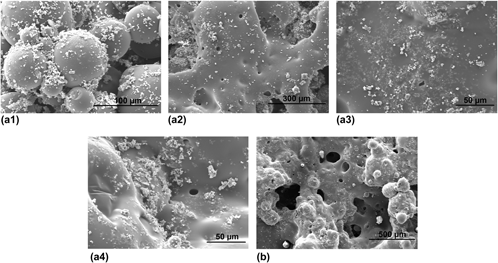Crossref Citations
This article has been cited by the following publications. This list is generated based on data provided by
Crossref.
Gu, Bon Kang
Choi, Dong Jin
Park, Sang Jun
Kim, Min Sup
Kang, Chang Mo
and
Kim, Chun-Ho
2016.
3-dimensional bioprinting for tissue engineering applications.
Biomaterials Research,
Vol. 20,
Issue. 1,
Ligon, Samuel Clark
Liska, Robert
Stampfl, Jürgen
Gurr, Matthias
and
Mülhaupt, Rolf
2017.
Polymers for 3D Printing and Customized Additive Manufacturing.
Chemical Reviews,
Vol. 117,
Issue. 15,
p.
10212.
Yu, Yueqiang
Guo, Yanling
Jiang, Ting
Jiang, Kaiyi
Li, Jian
and
Guo, Shuai
2017.
Laser sintering and post-processing of a walnut shell/Co-PES composite.
RSC Advances,
Vol. 7,
Issue. 37,
p.
23176.
Schmidt, Michael
Merklein, Marion
Bourell, David
Dimitrov, Dimitri
Hausotte, Tino
Wegener, Konrad
Overmeyer, Ludger
Vollertsen, Frank
and
Levy, Gideon N.
2017.
Laser based additive manufacturing in industry and academia.
CIRP Annals,
Vol. 66,
Issue. 2,
p.
561.
Esposito Corcione, Carola
Scalera, Francesca
Gervaso, Francesca
Montagna, Francesco
Sannino, Alessandro
and
Maffezzoli, Alfonso
2018.
One-step solvent-free process for the fabrication of high loaded PLA/HA composite filament for 3D printing.
Journal of Thermal Analysis and Calorimetry,
Vol. 134,
Issue. 1,
p.
575.
Ngo, Truc T.
Blair, Savanna
Kuwahara, Katie
Christensen, Drew
Barrera, Isabel
Domingo, Myles
and
Singamneni, Sarat
2018.
Drug impregnation for laser sintered poly(methyl methacrylate) biocomposites using supercritical carbon dioxide.
The Journal of Supercritical Fluids,
Vol. 136,
Issue. ,
p.
29.
Velu, Rajkumar
Kamarajan, Banu Pradheepa
Ananthasubramanian, Muthusamy
Ngo, Truc
and
Singamneni, Sarat
2018.
Post-process composition and biological responses of laser sintered PMMA and β-TCP composites.
Journal of Materials Research,
Vol. 33,
Issue. 14,
p.
1987.
Luo, You-Ran
Zhang, Li
Chen, Cheng
Sun, Dong-Yuan
Wu, Peng
Wang, Yue
Liao, Yun-Mao
Cao, Xiao-Yan
Cheng, Cheng-Kung
Tang, Zi-Qing
and
Liang, Xing
2018.
The delayed degradation mechanism and mechanical properties of β-TCP filler in poly(lactide-co-glycolide)/beta-tricalcium phosphate composite suture anchors during short-time degradation in vivo.
Journal of Materials Research,
Vol. 33,
Issue. 24,
p.
4278.
Shafranek, Ryan T.
Millik, S. Cem
Smith, Patrick T.
Lee, Chang-Uk
Boydston, Andrew J.
and
Nelson, Alshakim
2019.
Stimuli-responsive materials in additive manufacturing.
Progress in Polymer Science,
Vol. 93,
Issue. ,
p.
36.
Velu, Rajkumar
Raspall, Felix
and
Singamneni, Sarat
2019.
Green Composites for Automotive Applications.
p.
171.
Raspall, Felix
Velu, Rajkumar
and
Vaheed, Nahaad Mohammed
2019.
Fabrication of complex 3D composites by fusing automated fiber placement (AFP) and additive manufacturing (AM) technologies.
Advanced Manufacturing: Polymer & Composites Science,
Vol. 5,
Issue. 1,
p.
6.
Singamneni, Sarat
Velu, Rajkumar
Behera, Malaya Prasad
Scott, Sonya
Brorens, Peter
Harland, Duane
and
Gerrard, Juliet
2019.
Selective laser sintering responses of keratin-based bio-polymer composites.
Materials & Design,
Vol. 183,
Issue. ,
p.
108087.
Hosseini, Samaneh
Halvaei, Majid
Ebrahimi, Amin
Shamekhi, Mohammad Amin
and
Baghaban Eslaminejad, Mohamadreza
2020.
Applications of Biomedical Engineering in Dentistry.
p.
195.
Gan, Xinpeng
Fei, Guoxia
Wang, Jinzhi
Wang, Zhanhua
Lavorgna, Marino
and
Xia, Hesheng
2020.
Structure and Properties of Additive Manufactured Polymer Components.
p.
149.
Tan, Lisa Jiaying
Zhu, Wei
and
Zhou, Kun
2020.
Recent Progress on Polymer Materials for Additive Manufacturing.
Advanced Functional Materials,
Vol. 30,
Issue. 43,
Chatterjee, Kony
and
Ghosh, Tushar K.
2020.
3D Printing of Textiles: Potential Roadmap to Printing with Fibers.
Advanced Materials,
Vol. 32,
Issue. 4,
Bharaj, Karan
Paul, Sourabh
Mumtaz, Kamran Aamir
Chisholm, Michael
and
Hopkinson, Neil
2020.
Fabricating poly(methyl methacrylate) parts using high-speed sintering.
Proceedings of the Institution of Mechanical Engineers, Part B: Journal of Engineering Manufacture,
Vol. 234,
Issue. 1-2,
p.
118.
Bahraminasab, Marjan
2020.
Challenges on optimization of 3D-printed bone scaffolds.
BioMedical Engineering OnLine,
Vol. 19,
Issue. 1,
Puppi, Dario
and
Chiellini, Federica
2020.
Biodegradable Polymers for Biomedical Additive Manufacturing.
Applied Materials Today,
Vol. 20,
Issue. ,
p.
100700.
Nouri, Alireza
Rohani Shirvan, Anahita
Li, Yuncang
and
Wen, Cuie
2021.
Additive manufacturing of metallic and polymeric load-bearing biomaterials using laser powder bed fusion: A review.
Journal of Materials Science & Technology,
Vol. 94,
Issue. ,
p.
196.



